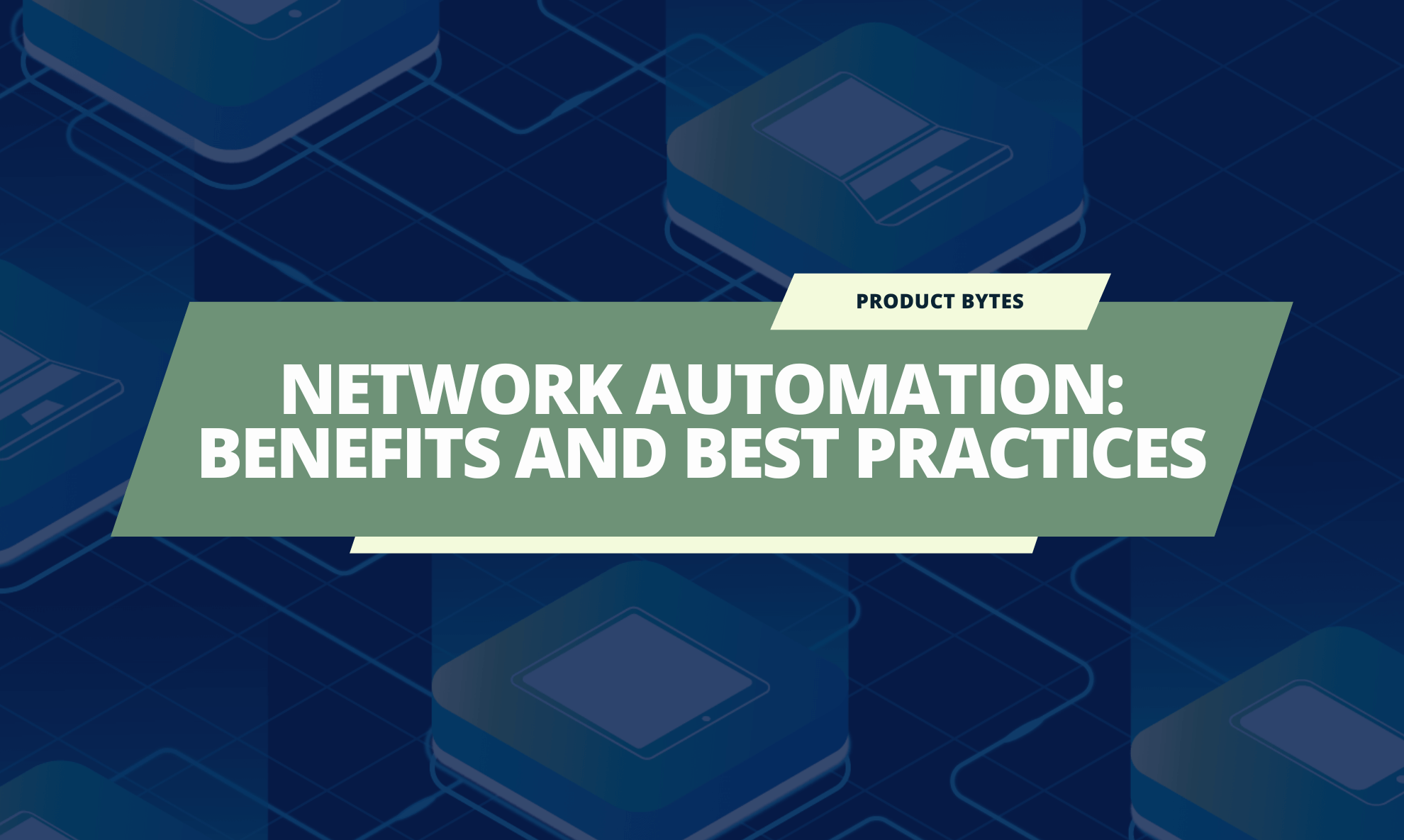Is there something you need to learn about network automation? Do you have plans or doubts about automation?
We’ll try to help by sharing some of the most essential automation-related questions.
What Is Network Automation?
Network automation is the process of automating manual processes and repetitive tasks such as device provisioning, configuration management, software updates, and more.
In other words, automation optimizes the way you work. It makes repetitive tasks less complex, allowing your team to focus on more critical areas.
Automation can be a game-changer, allowing organizations that implement automation to see a 240% increase in workflow efficiency. (Gitnux)
How Does Network Automation Work?
Network automation controls network functions using predefined policies, standardized protocols, and interfaces. In other words, the network automation goal is to automatically and regularly execute pre-defined commands to automate manual tasks.
Why Automate Your Network?
One of the most significant issues for IT Pros is the growing number of devices and network operations. The more your network grows and becomes more complex, the greater the need to rely on scalable and efficient ways to handle it. That’s where network automation comes in.
Why automate your network? The answer might seem obvious, but adopting an automation journey involves many steps.
One of the most essential reasons to adopt automation is to simplify repetitive tasks. As your network grows, the number of tasks increases exponentially. What’s more, the risk of human error increases, too. As a result, your team may need to invest resources in more reliable network performance.
Additionally, automation helps you build scalability. To clarify, the more you manage, the greater the complexity. As a result, you need automation not only to manage repetitive tasks but to be able to scale and offer a reliable service managing multiple devices in dispersive locations.
Automation processes and tools can help your team handle this growth seamlessly, ensuring your network remains stable.
Furthermore, automation can help your security. You can implement automation in the process of installing and configuring security updates. In addition, you can have automation policies to respond to potential threats faster than a human could.
Read about some exciting network automation statistics.
Network Automation Benefits – What Problems Can Solve?
Network automation can help you solve several critical problems. Some of them include:
Streamlines Time-consuming Processes
Many of us have many time-consuming tasks. But do you know which ones? Consider time mapping to understand where you invest your time. You’ll discover exciting news about your routine tasks that can be automated, freeing up valuable IT resources.
Consider this list of best process mapping tools if you like the idea.
Reduces Human Error and Gives a Boost to Your Efficiency
When you perform the same task many times, you master it. However, manual tasks are prone to errors. Automation can nearly eliminate human error, so your team can focus on crucial tasks.
Scalability
As networks grow, automation enables you to manage them more effectively without increasing staff or resources.
Downtime
Network automation involves real-time alerts and network analysis that can help you identify and resolve issues before they escalate into major problems.
Optimizes Costs
Automating tasks reduces the need for manual labor. Automating the rights task can result in significant cost savings and improved resource efficiency.
Enhanced Service Delivery and Customer Satisfaction
To sum up, when you use automation, you work more efficiently, save your time for more essential tasks, and invest your money where you have significant needs. As a result, you are improving service delivery and have happier clients.
Network Automation Cons
Despite its benefits, network automation also comes with its own set of challenges:
- Complexity: Sometimes, starting automation, even simple tasks, might not be easy. The reason? You need an experienced person to develop your automation scripts. What’s more, you must pay attention to how you implement automation processes because even small mistakes in automation scripts can cause disruptions.
- Skill Gaps: As mentioned above, not all IT professionals are familiar with network automation tools. Therefore, you should invest money and time in training staff.
- Integration: Integrating automation into existing networks can be challenging. Compatibility issues might arise, requiring additional customization.
- Security: Automating security checks is beneficial, but organizations must ensure that the automated systems are secure from breaches or attacks.
How Domotz Can Help with Network Automation
Choose Domotz as your trusted partner in this journey to have a little help with automation. To clarify, Domotz can help you make network automation not just possible but effective and efficient.
With our platform, you can reduce manual, time-consuming tasks and implement an automated approach.
We’ll provide an easy-to-use platform for monitoring, managing, and automating network tasks. In particular, with Domotz, you can automate routine processes like the following:
- Device discovery: Domotz automatically discovers all your IP-connected devices using a database that can classify over 30 billion devices.
- Configuration management: Domotz offers comprehensive network configuration management features for critical network infrastructure devices. We’ll offer automatic backups, compliance and auditing, remote management, device updates, and more.
- Alerting: If you adopt Domotz, you’ll be able to rely on a seamless alerting engine offering comprehensive alerting variables and security sensors and alerts. We are also integrated with third-party systems.
Start Your Free Trail today to experience how automation can transform your network management.
Learn more about the best network automation tools on G2.
Network Automation Resources to Learn From
If you’re interested in exploring more about network automation, here are some excellent resources to get started:
- “Network Programmability and Automation” by Jason Edelman: This book covers key concepts and tools for network automation and programmability. Learn more about this book here.
- “Cisco DevNet” by Constantin Mohorea: Offers hands-on labs and courses to learn network automation and programming with Cisco products. Learn more here.
- “Mastering Python Networking” by Eric Chou: Learn how to use Python for network automation, from scripting to building automated workflows. More details here.
- “Network Automation with Ansible” by Jason Edelman: The Ansible project offers a comprehensive guide for automating network infrastructure using Ansible’s playbooks. Details here.
Further reading:
- 4 Security Automation Best Practices
- How MSP Automation Can Keep Your Business Sustainable
- MSP Business Plan – 7 Things to Have in it



